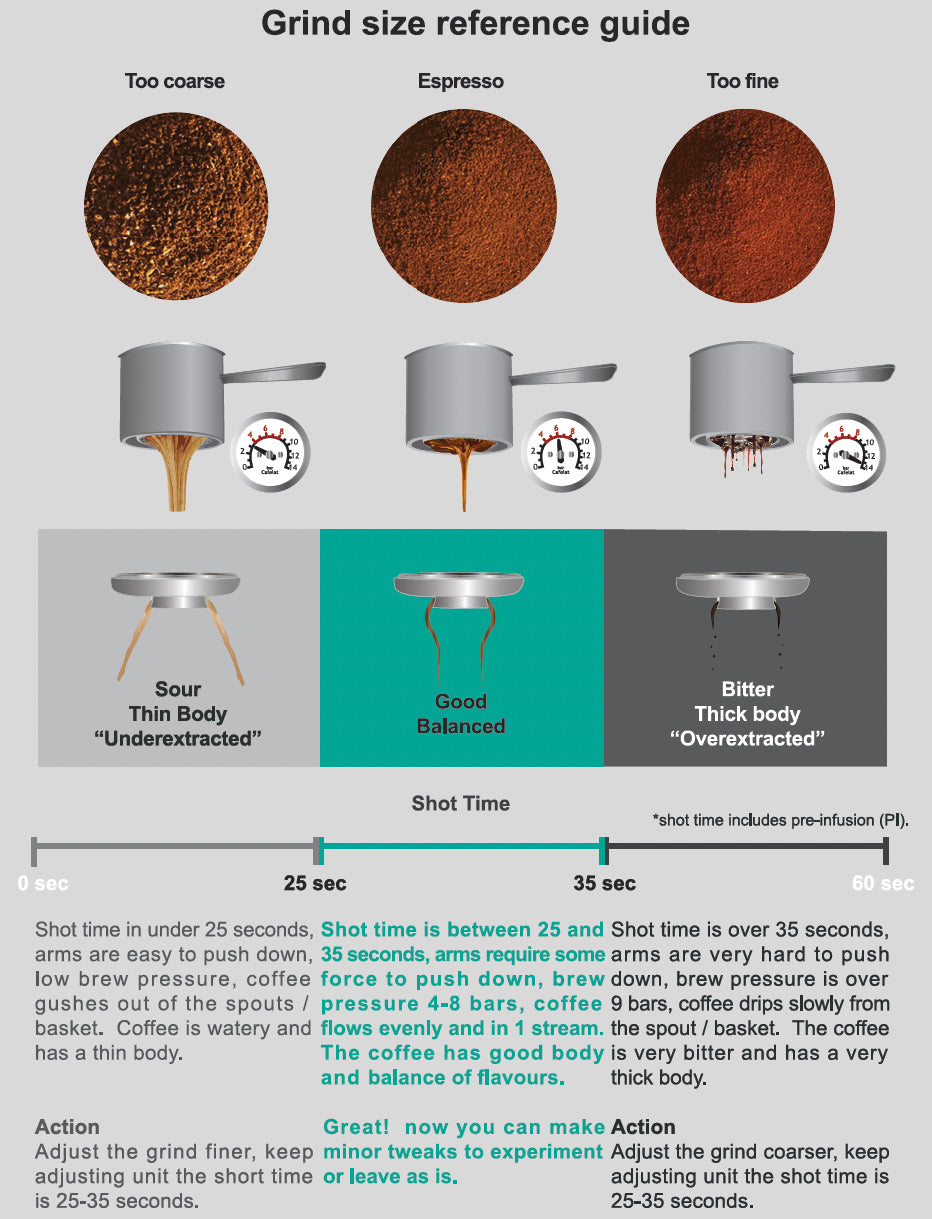As a home barista, perfecting the timing of your espresso extraction can transform your coffee experience. The beauty of espresso lies in harmonizing timing, grind size, and flow rate. When I first began my espresso journey, this process seemed daunting, but understanding the fundamentals turned it into an enjoyable and rewarding routine. Dive into the features and performance in our DeLonghi Magnifica Evo review
The Importance of Timing in Espresso Extraction
Timing is a critical factor in achieving a consistent and flavorful espresso. It determines how much flavor is extracted from the coffee grounds. If the extraction is too short, the result is an under-extracted shot with sour, sharp flavors and little complexity. Conversely, an overly long extraction can lead to bitterness and an unpleasant aftertaste, signs of over-extraction. Learn why this classic model stands out in our DeLonghi Magnifica S review

Methods for Timing Espresso Extraction
In my experience, there are two popular approaches to timing espresso extraction. Some baristas prefer to start the timer as soon as the pump begins, while others wait until the first drop of espresso appears. Personally, I start timing as soon as I press the espresso button. This approach includes the pre-infusion stage and helps maintain consistency across shots. Discover the convenience and technology in our Philips LatteGo 5400 review
Identifying the Optimal Extraction Time
The ideal extraction time generally falls between 25 and 35 seconds. Through experimentation, I’ve found that aiming for around 30 seconds often produces a well-balanced shot. An extraction under 25 seconds typically results in a weak and sour espresso, indicating under-extraction. If it exceeds 35 seconds, over-extraction may occur, leading to bitterness. Explore the compact design and features in our Philips 3200 LatteGo review
Fine-Tuning Grind Size for Better Timing
Espresso timing is intrinsically linked to grind size. A finer grind slows the extraction, while a coarser grind speeds it up. If your shot extracts too quickly (under 25 seconds), the grind might be too coarse. Conversely, a longer extraction (over 35 seconds) suggests the grind is too fine. It took me several tries to find the perfect grind size, but once I did, the quality of my espresso improved significantly. Get all the details on versatility and functionality in our Philips 4300 LatteGo review
Let Taste Be Your Guide
While timing is essential, the flavor should always guide your adjustments. A well-balanced espresso delivers a harmonious blend of sweetness, acidity, and body. If your shot tastes sour or thin, it’s likely under-extracted, and a finer grind or adjusted brew ratio could help. Bitter, dry flavors indicate over-extraction, which may require a coarser grind or shorter extraction time.
Common Espresso Extraction Problems and Solutions
Here are a few common challenges I’ve encountered and how to address them:
- Under-extraction: If the shot pulls in under 25 seconds and tastes sour, the grind is too coarse. Adjust to a finer grind and try again.
- Over-extraction: If the shot takes over 35 seconds and tastes bitter, the grind is likely too fine. A coarser grind can help balance the flavor.
Considering Pre-Infusion in Extraction Timing
Pre-infusion can impact the total extraction time. Many high-end espresso machines include a pre-infusion feature, where water rests on the grounds before applying full pressure. Incorporating this stage into your timing can improve results. For machines without automatic pre-infusion, you can simulate the effect by manually starting and stopping the pump briefly.
Using Brew Ratios to Refine Flavor
Another critical element in espresso extraction is the brew ratio—the proportion of ground coffee to liquid espresso. A common starting point is a 1:2 ratio, such as 18 grams of coffee yielding 36 grams of espresso. Adjusting this ratio based on the coffee type can unlock different flavor profiles.
For lighter roasts, a longer extraction or lower ratio (e.g., 1:2.5) can highlight fruity, vibrant notes. For darker roasts, a standard 1:2 ratio can reduce bitterness while retaining body and richness.
Relying on Sensory Feedback
Ultimately, tasting and evaluating your espresso is the most important step. Timing provides a reliable framework, but the flavor is the true indicator of success. I’ve had shots that were perfectly timed yet didn’t taste right due to grind size or brew ratio inconsistencies. By experimenting with these variables, I’ve refined my ability to pull consistently excellent shots.

Conclusion: Perfecting Your Espresso Craft
Mastering espresso extraction requires time, practice, and patience. By focusing on key elements like timing, grind size, and flavor, you’ll soon be pulling shots that rival those from your favorite café. Experimentation and sensory feedback are your best tools for achieving consistently great espresso.
